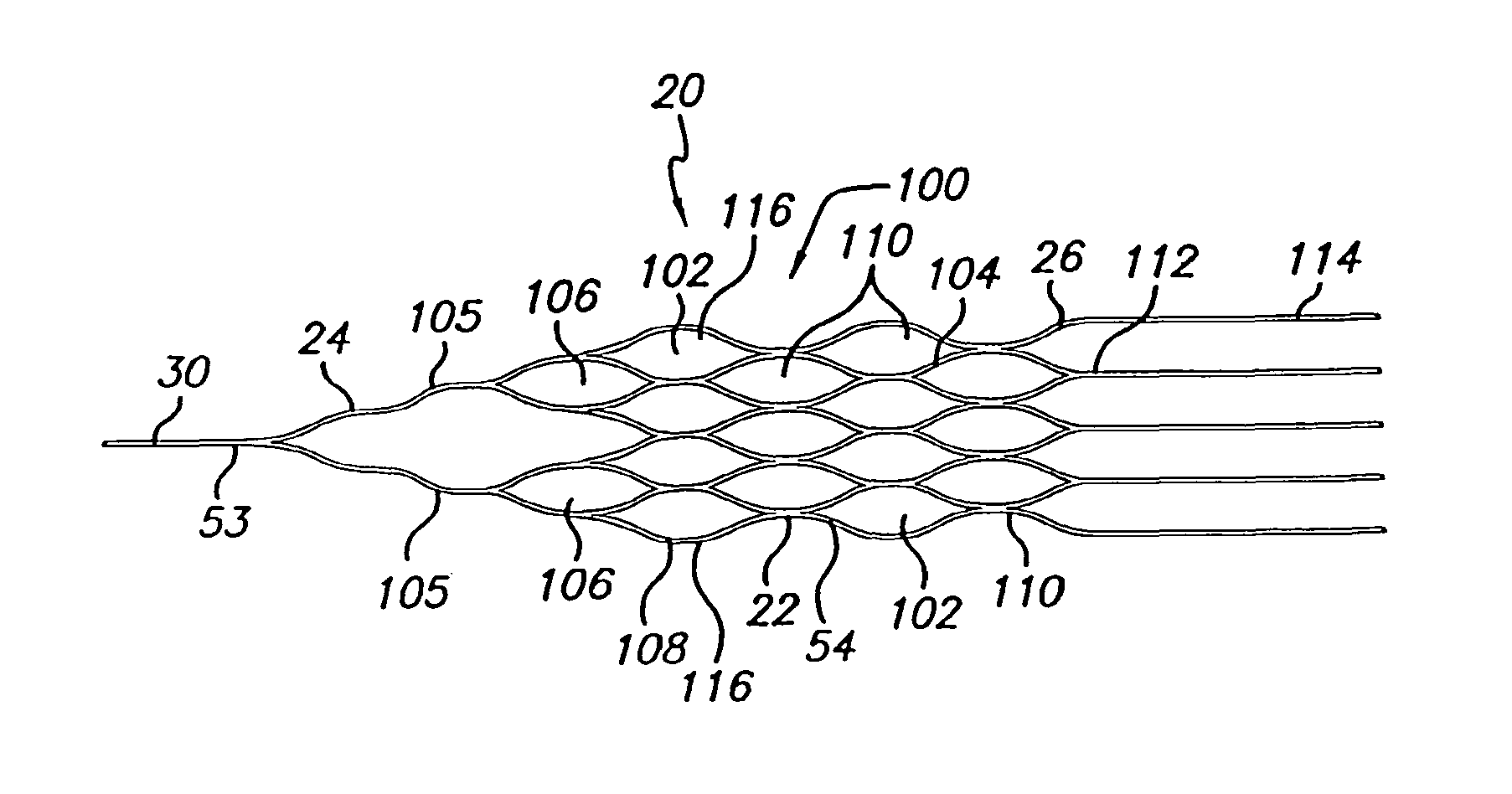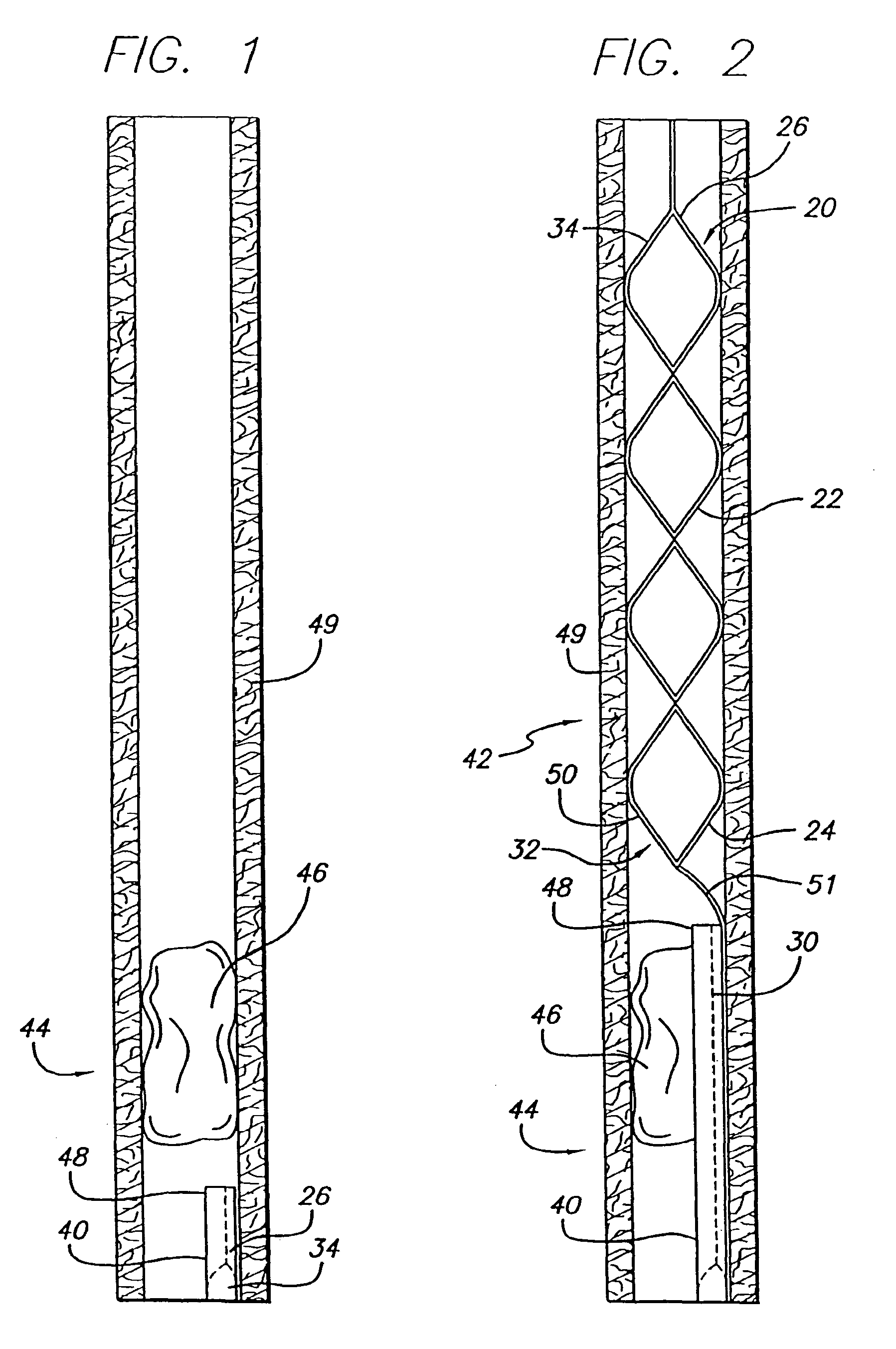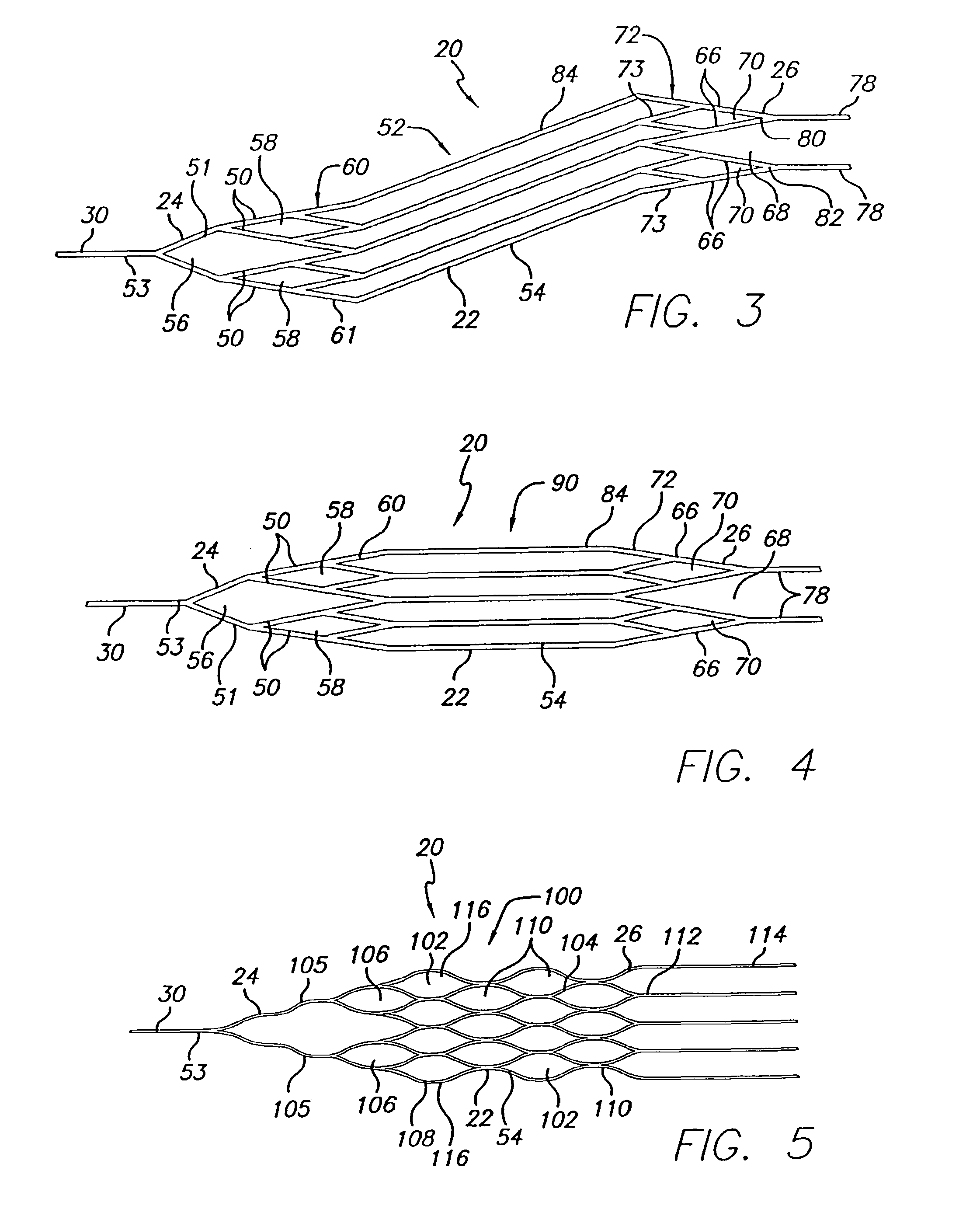Snare
a snare device and snare tube technology, applied in the field of snare, can solve the problems of emboli not being fully vaporized and thus entering the bloodstream, affecting the patient's health, and causing severe injuries to patients, so as to improve the radial and angular resistance to collapse, and restore the patency of blood vessels.
- Summary
- Abstract
- Description
- Claims
- Application Information
AI Technical Summary
Benefits of technology
Problems solved by technology
Method used
Image
Examples
first embodiment
[0062]In an alternative embodiment of a snare pattern 90 (FIG. 4), the proximal end and distal end portions 24, 26 also include members 50, 51, 66 which define proximal and distal parallelogram-shaped apertures 58, 70 as well as a diamond-shaped aperture 56 and an open ended triangle 68. This second snare pattern 90 also similarly includes proximal and distal rings 60, 72 as well as distally directed extensions 78, each of which are joined to one of the distal parallelogram-shaped apertures 70. Moreover, the midsection 54 of the pattern 90 includes a plurality of parallel, longitudinally extending members 84 which are joined to the structure defining the proximal and distal end portions 24, 26. This embodiment differs from the first embodiment, however, in that the longitudinally extending members are not helically configured when the pattern 90 is in its as cut form. Rather, while defining a sidewall of a generally tubular midsection 54, each of the longitudinally extending members...
fourth embodiment
[0073]As with the fourth embodiment, a single member 152 extends from each of the four crowns 147, 148 in both proximal and distal directions. Further, the four members 152 connected to the proximal crowns 147 converge into two members 154, each of which again converge to form a proximal tab 156. At the distal end of the device 20, adjacent pairs of the single members 152 converge to a single extension 158. Again, the terminal ends 158 may be joined using soldering, laser welding, adhesive, shrink wrap, or by employing a coil configured about adjacent structure.
[0074]Referring now to FIG. 12, there is shown one preferred embodiment of the elongated member 30 of the present invention. The member 30 embodies a gradual or step-tapered core comprising a proximal section of 304V stainless steel and a distal section of nitinol or an equivalent material for the intended purpose. A proximal portion 160 of the member 30 has a generally constant cross-sectional profile and a first diameter 16...
PUM
 Login to View More
Login to View More Abstract
Description
Claims
Application Information
 Login to View More
Login to View More - R&D
- Intellectual Property
- Life Sciences
- Materials
- Tech Scout
- Unparalleled Data Quality
- Higher Quality Content
- 60% Fewer Hallucinations
Browse by: Latest US Patents, China's latest patents, Technical Efficacy Thesaurus, Application Domain, Technology Topic, Popular Technical Reports.
© 2025 PatSnap. All rights reserved.Legal|Privacy policy|Modern Slavery Act Transparency Statement|Sitemap|About US| Contact US: help@patsnap.com



